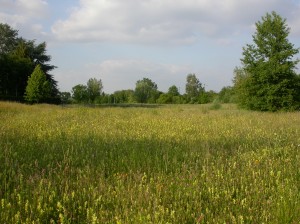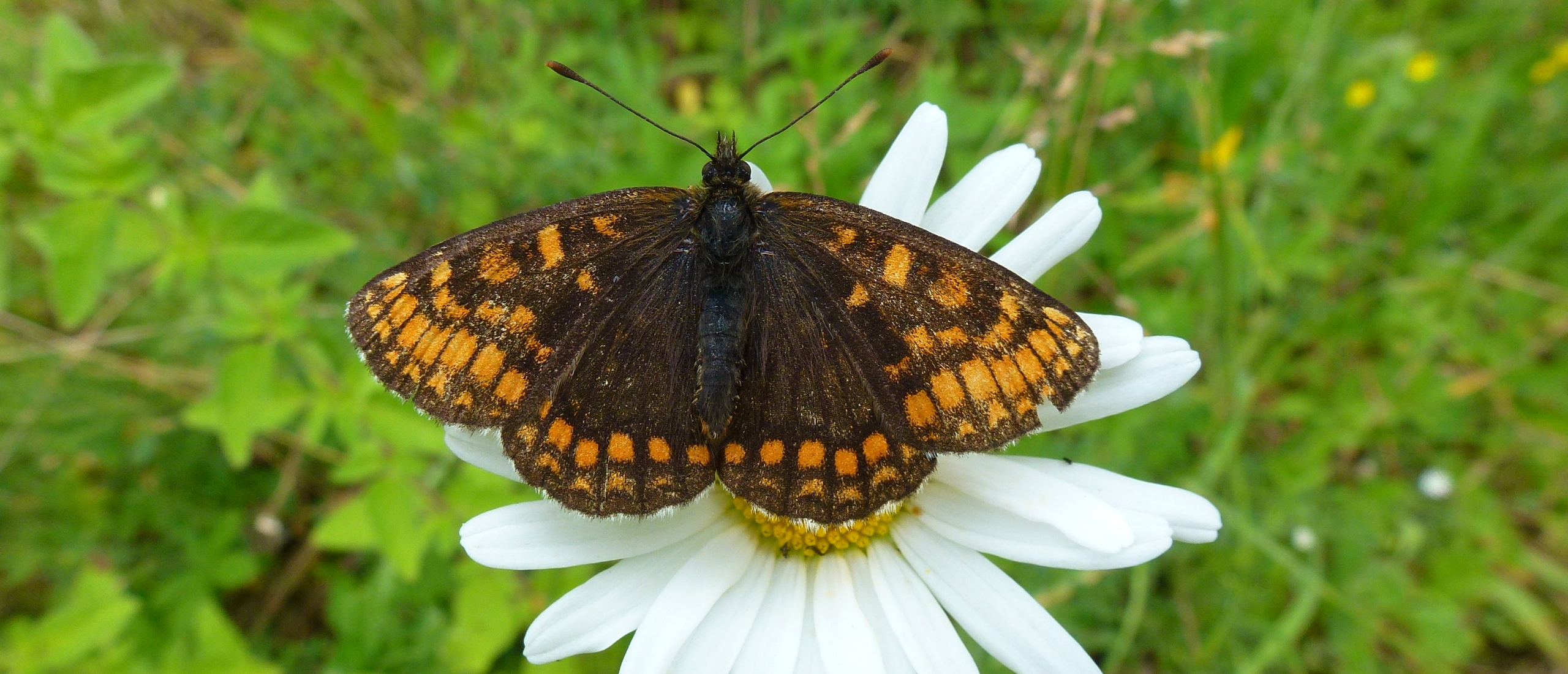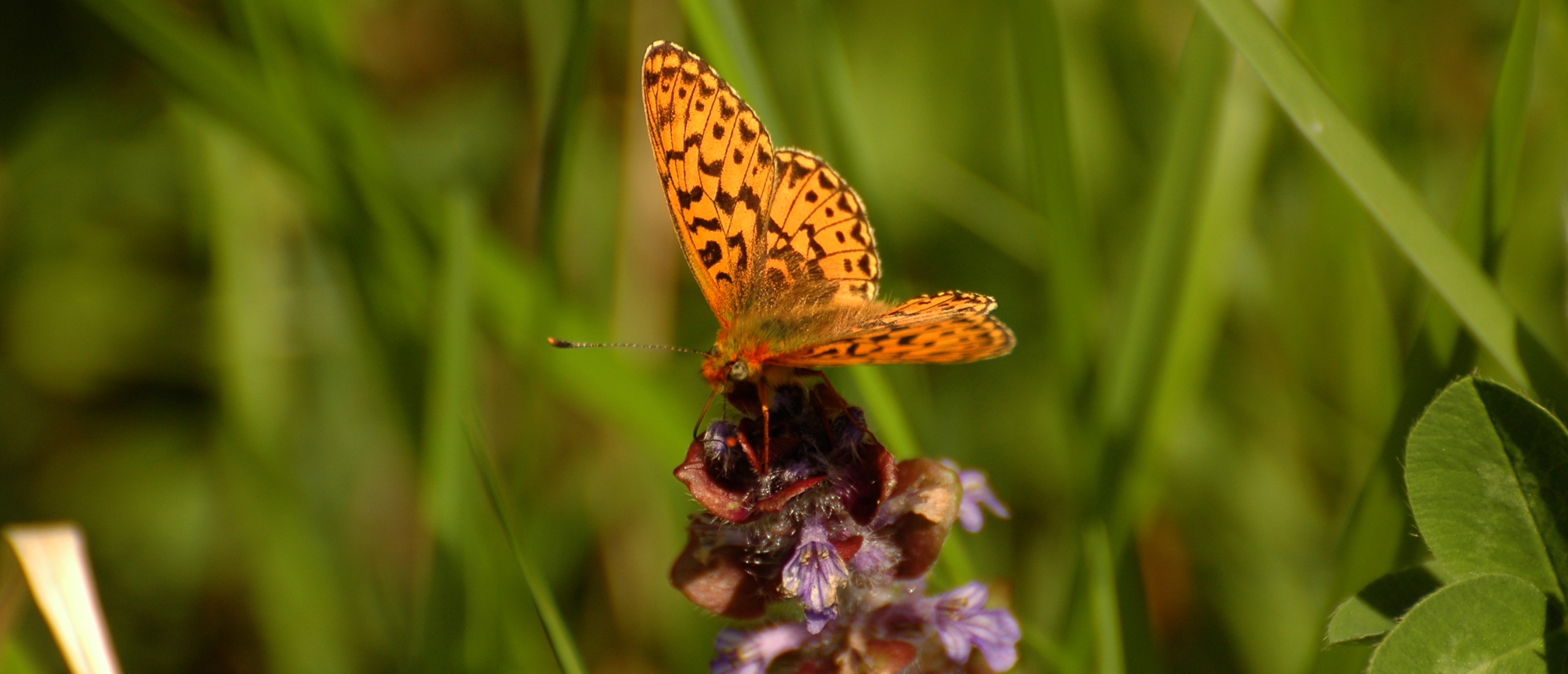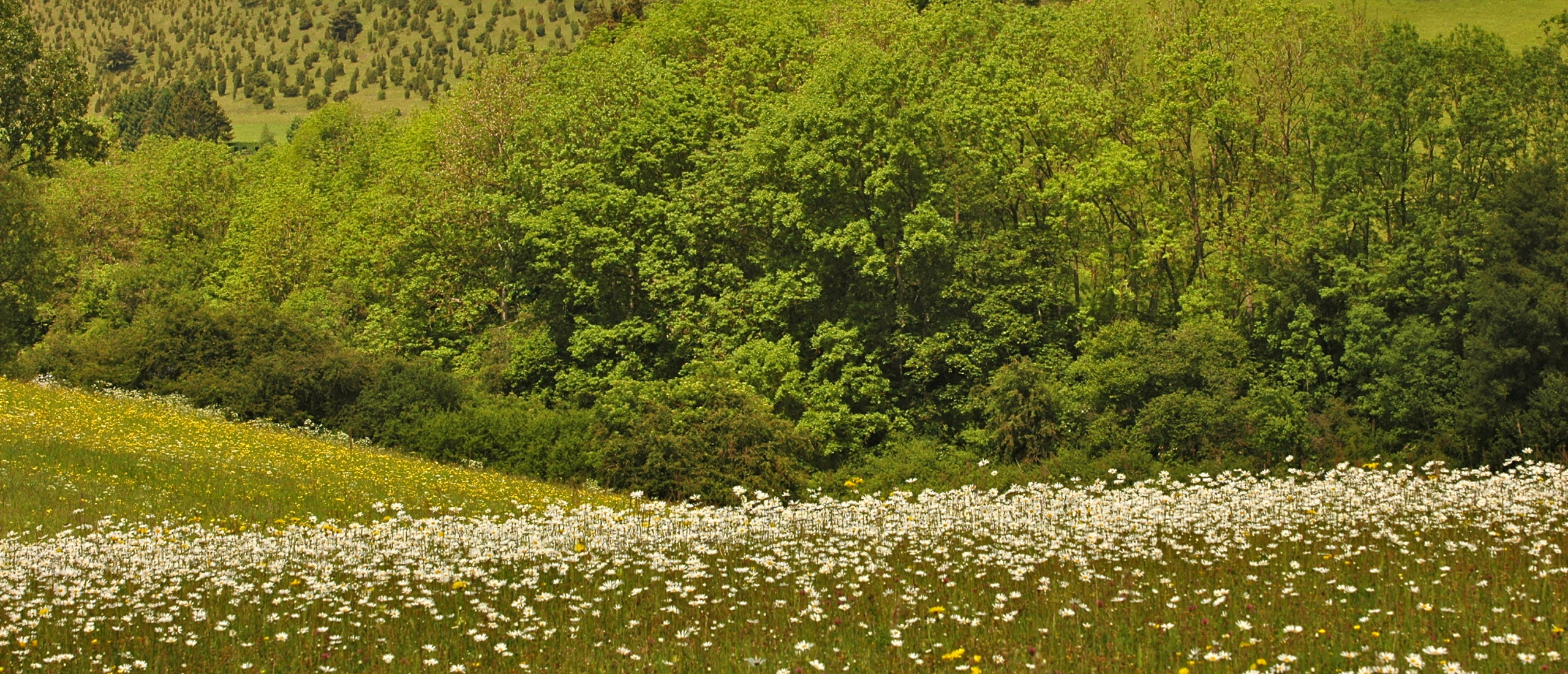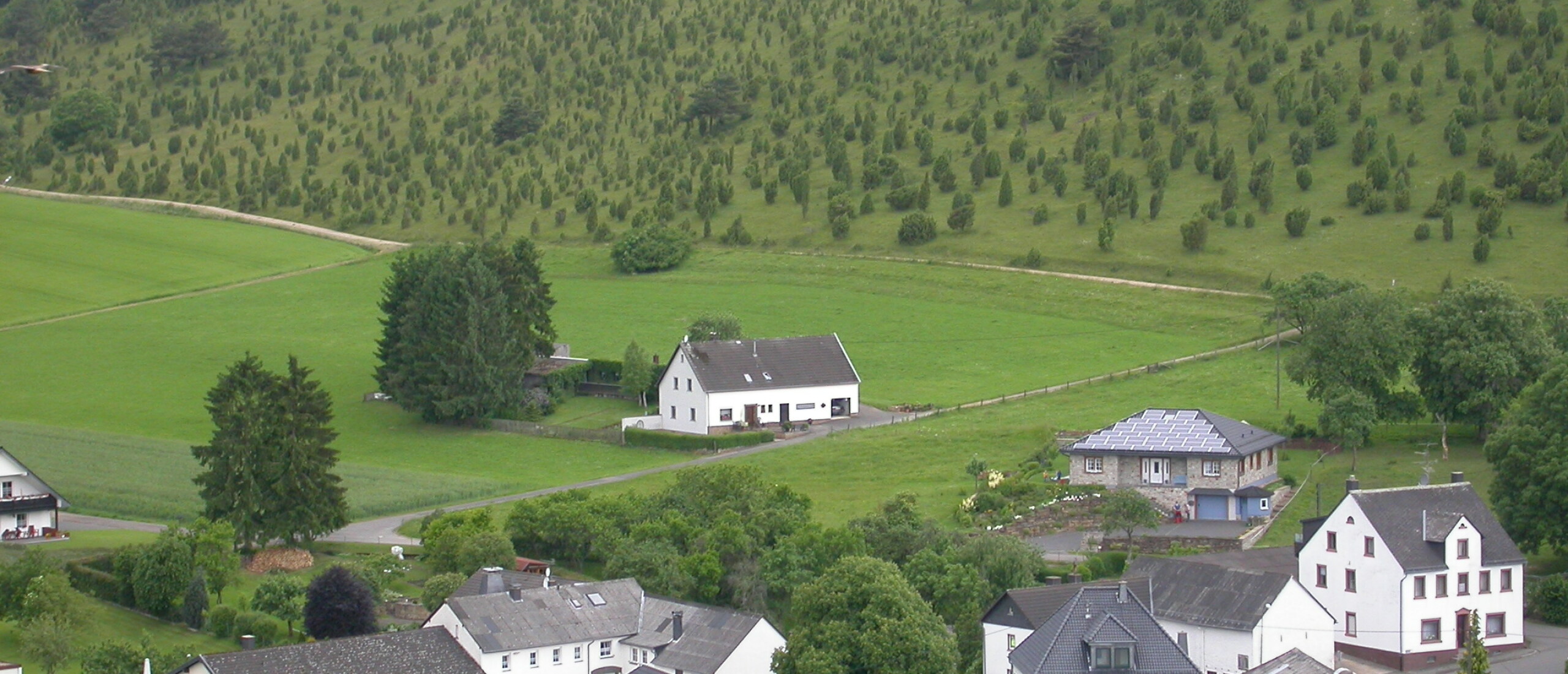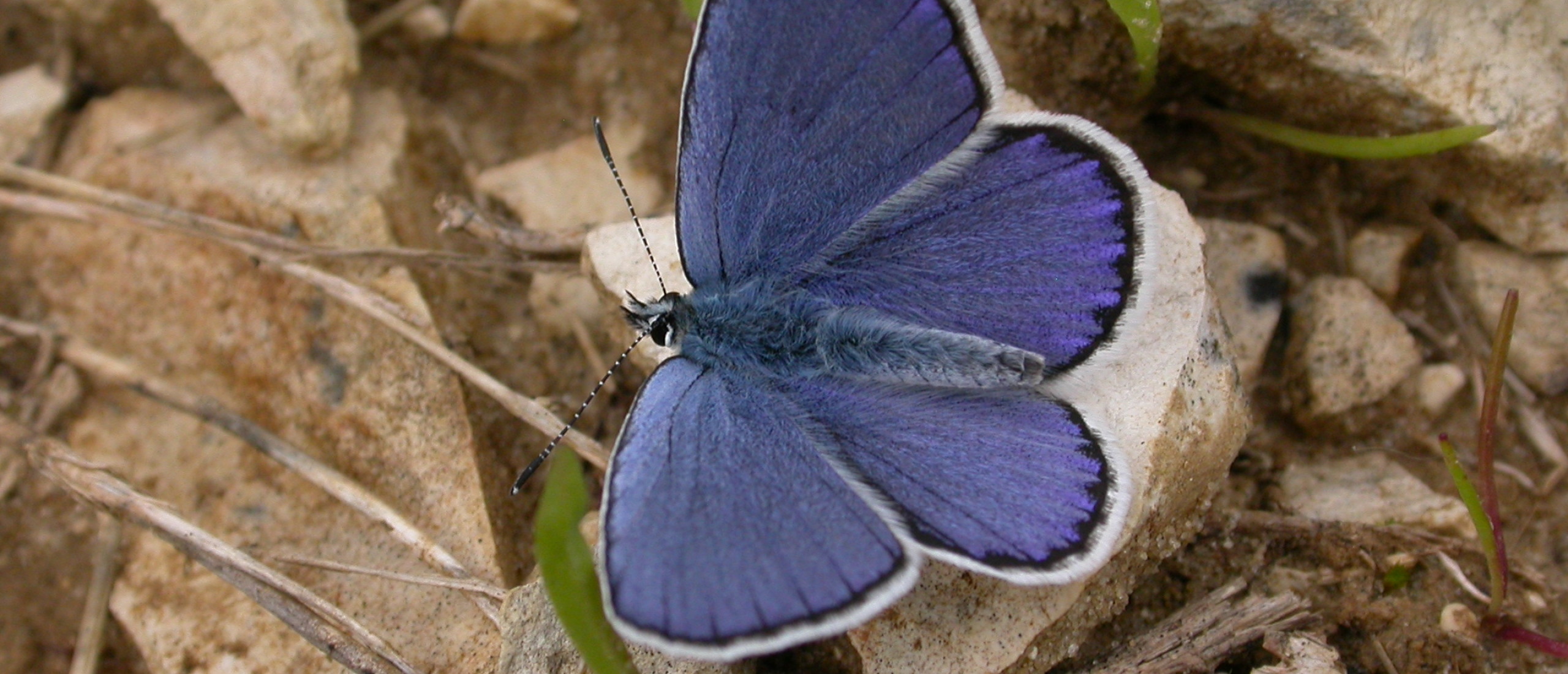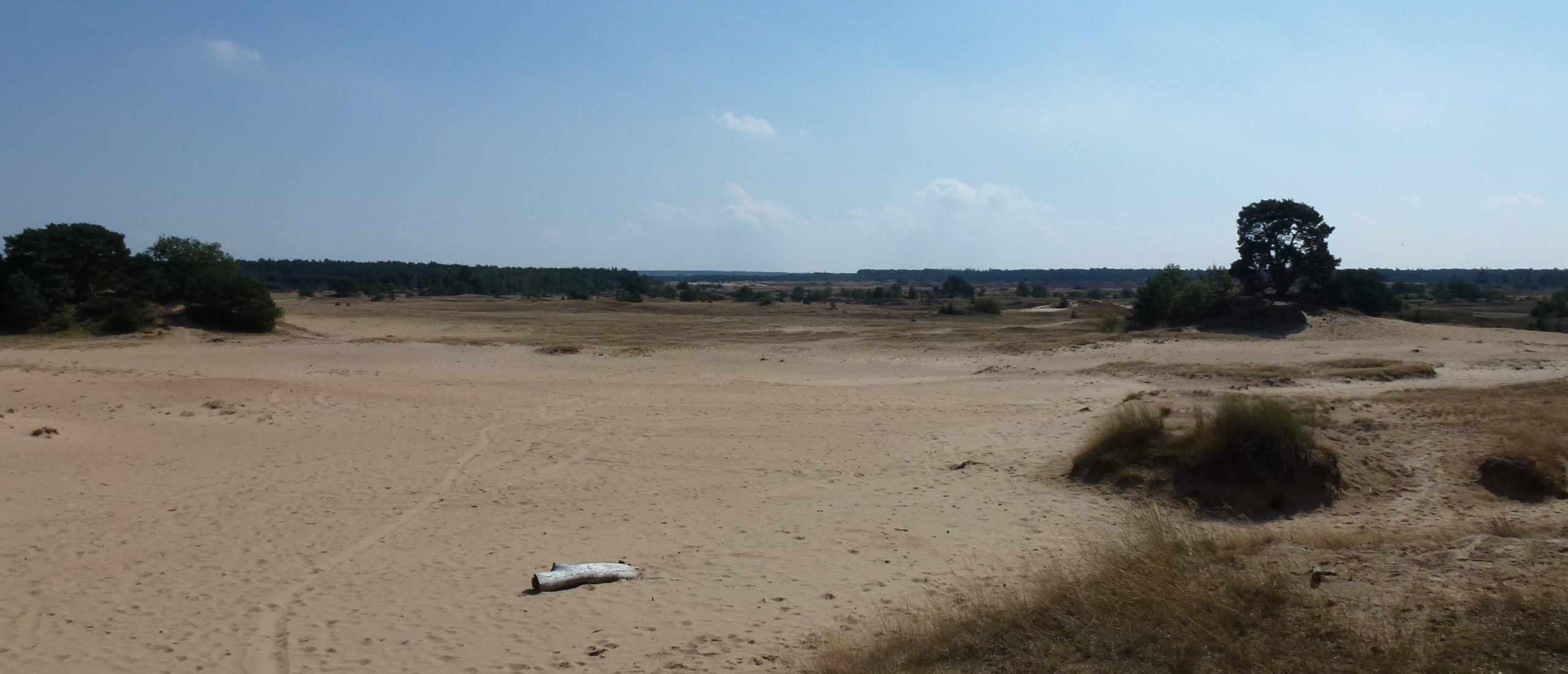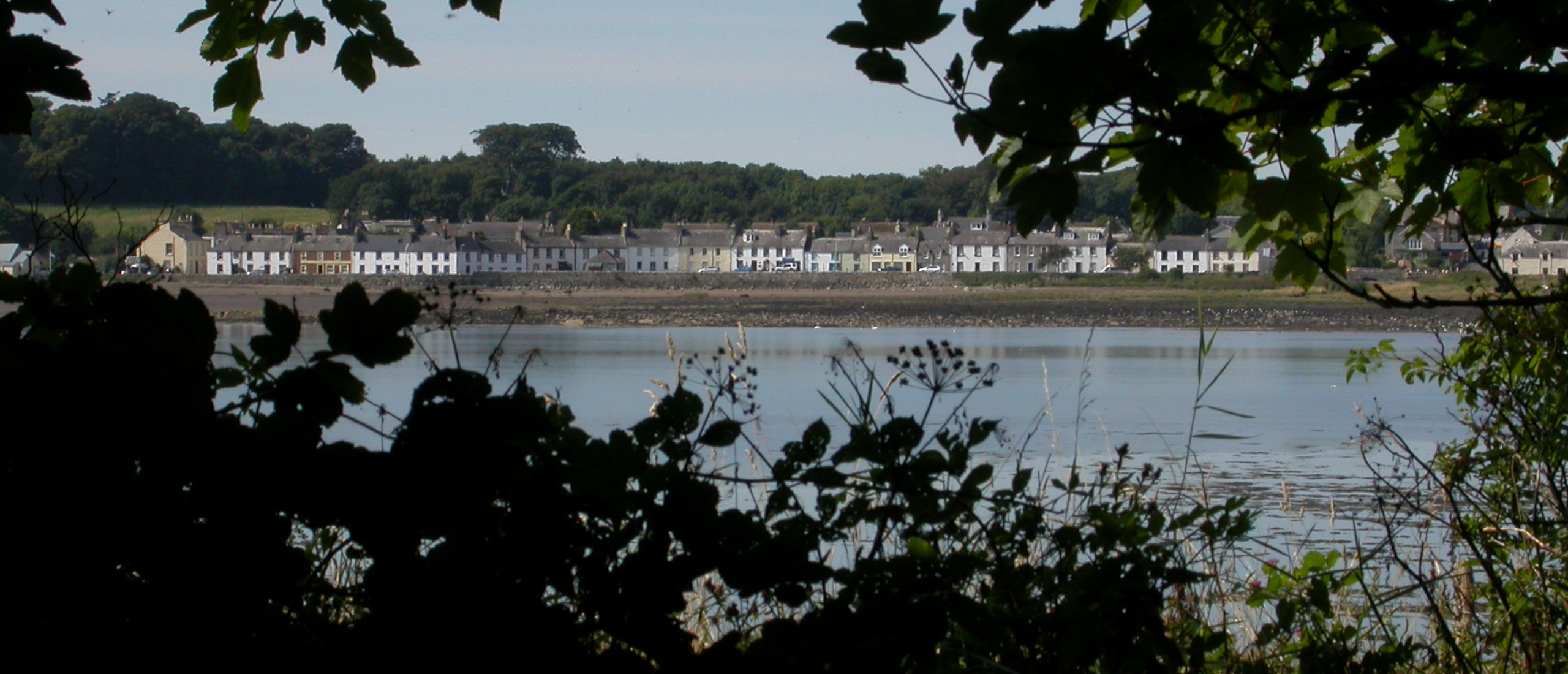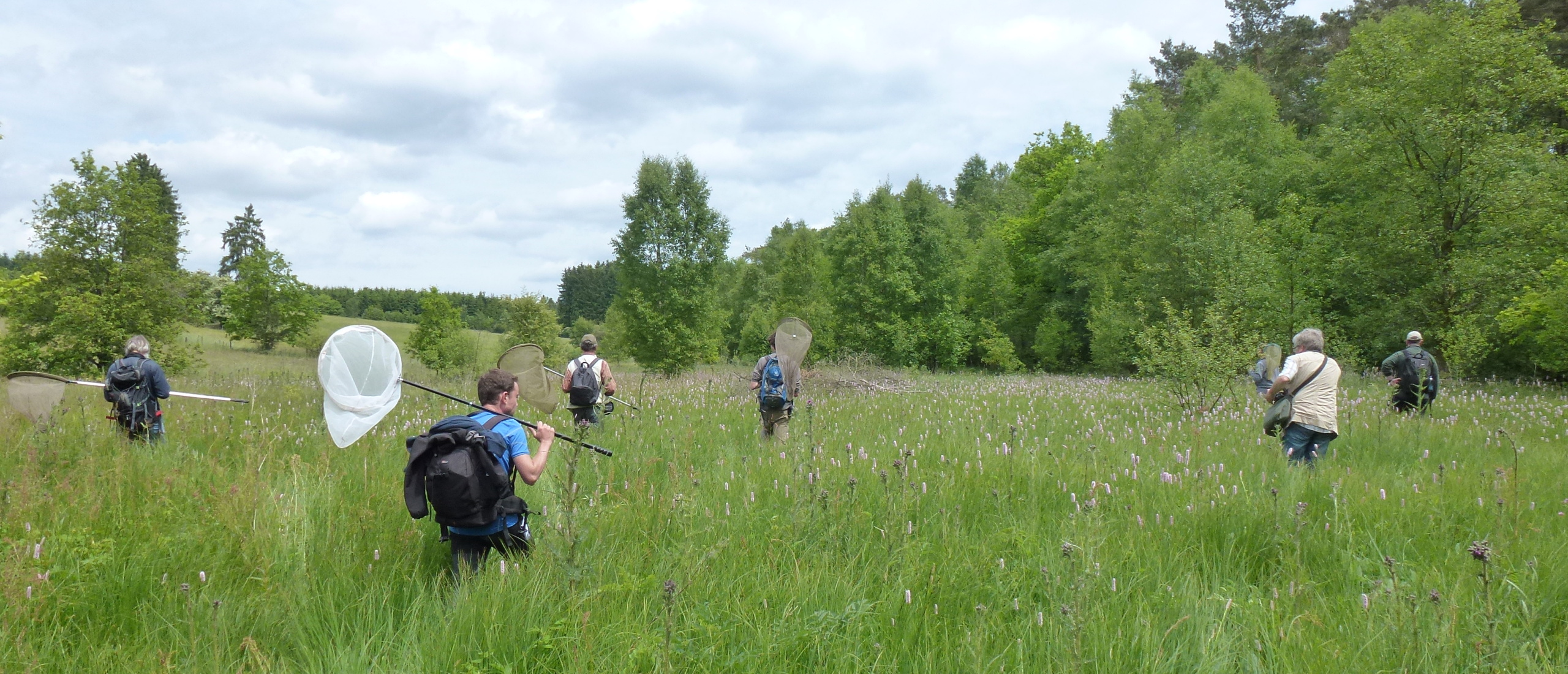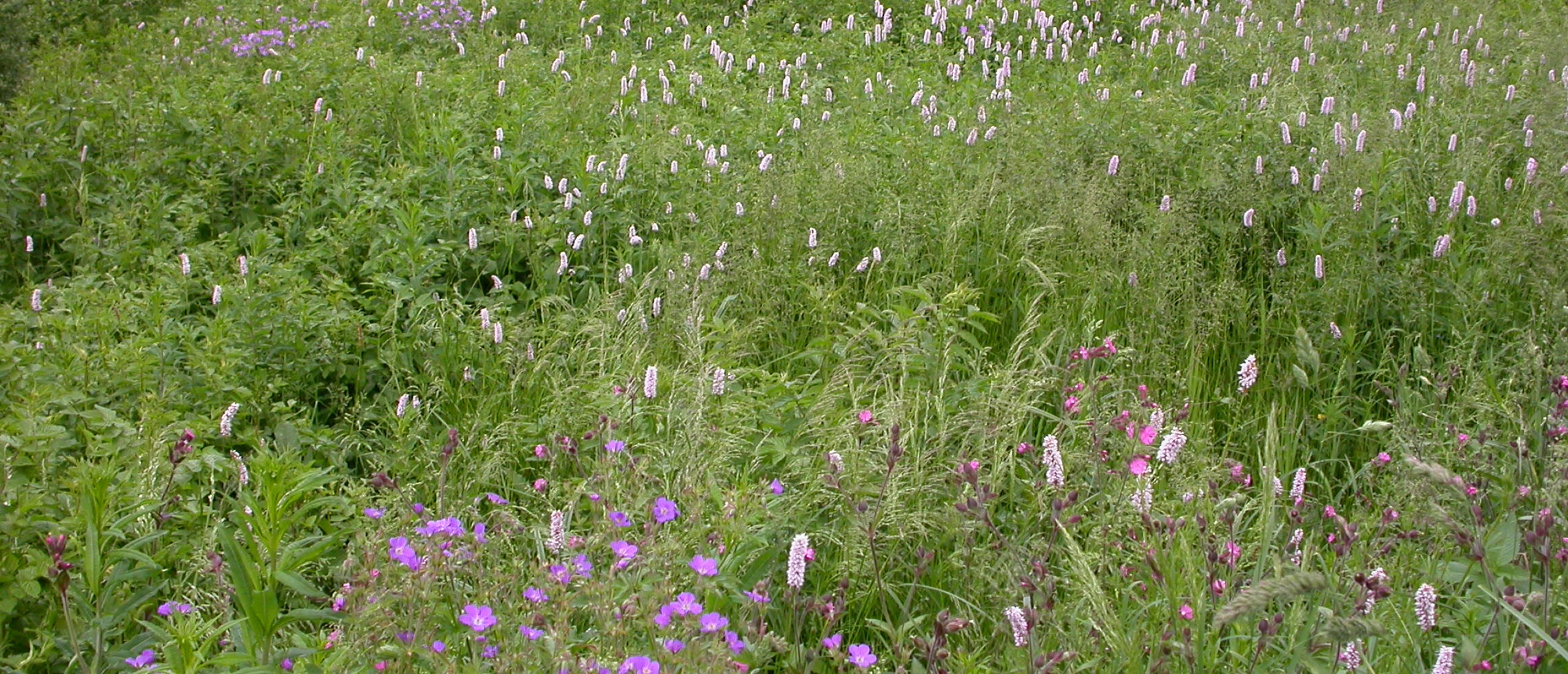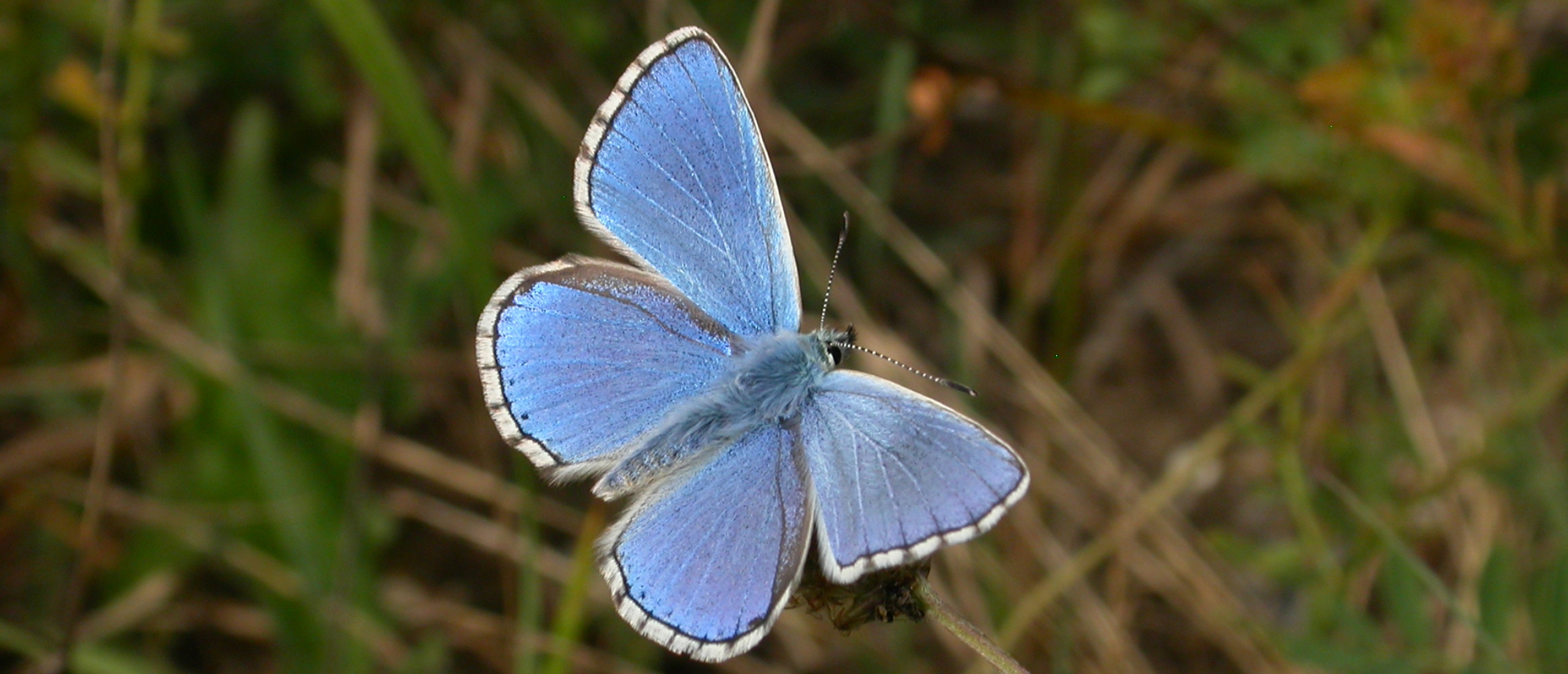
A mixed bag I have just returned to the Netherlands after a long weekend in France and Belgium. High temperatures on Friday augured well for a productive butterfly weekend, and to some degree that wish was to come true, but for some glitches. After work on Friday, I managed to reach the very southernmost area of the Netherlands, close to Maastricht, where I made my way quickly to an area which I knew was well known for its Glanville Fritillaries, Melitaea cinxia. This is not a species I had observed in the Netherlands previously, and I was anxious to find it before the evening drew in and butterflies disappeared (although Melitaea fritillaries can often be found roosting on flowerheads even at night if one has the dedication to look). Luckily, the sun was still blazing down, and I was soon approaching the beautiful, wildflower-rich slopes of what the Dutch consider a "mountain", at around 125 metres in height! This area is a mosaic of chalk grassland, and as such is both botanically and entomologically rich. Although approaching the slopes seemed not to be encouraged, by climbing over gates and crossing a field, I finally found myself in the natural grassland, and almost immediately I spotted my first Glanville Fritillary, soon followed by more than fifteen further individuals. Glanville Fritillaries hold a special interest for British butterfly enthusiasts, as the only place where they occur naturally today is on the broken down cliffs of the south coast of the Isle of Wight, and as such they require quite a major expedition to see them. The Glanville Fritillary has also an interesting history, being named after Lady Eleanor Glanville, a 17th century butterfly enthusiast who discovered this species in Lincolnshire, where it then also occurred. After her death, one of her sons contested her will on the grounds of lunacy, as eloquently described by Moses Harris in "The Aurelian" in 1766: "This Fly took its Name from the ingenious Lady Glanvil, whose Memory had like to have suffered for her Curiosity. Some Relations that was disappointed by her Will, attempted to let it aside by Acts of Lunacy, for they suggested that none but those who were deprived of their Senses, would go in Pursuit of Butterflies". Perhaps I could also have been accused of lunacy, as I stumbled about on the extremely steep and slippery slopes, attempting to secure a respectable photograph!
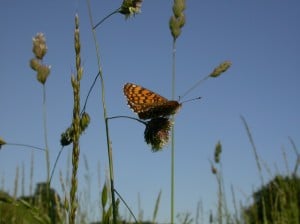 A Glanville Fritillary poses against the sky
A Glanville Fritillary poses against the sky
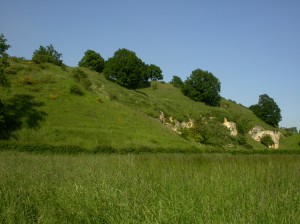 A Dutch mountain, habitat of the Glanville Fritillary
A Dutch mountain, habitat of the Glanville Fritillary
The following day, Saturday 8th June, was also bright and warm. The day's activity involved a longish walk through a varied mix of deciduous and coniferous woodland and grassland to the south of the Viroinval, one of Belgium's richest butterfly zones. However, rich or not rich, butterflies were astonishingly conspicuous by their absence, the only new species for my 2013 list being a single female Wall Brown, Lasiommata megera. Other than a few Brimstones, Gonepteryx rhamni, a female Orange-tip, Anthocharis cardamines, perhaps six Speckled Woods, Pararge aegeria, and a gorgeous Scarce Swallowtail, Iphiclides podalirius, nectaring in a garden, there was virtually nothing to report. Why this should be, I do not know. I even wondered whether the entire area might have been sprayed from the air against Oak Processionary Moth larvae, but this seems unlikely.
 A Scarce Swallowtail nectaring in a garden
A Scarce Swallowtail nectaring in a garden
Following a total wash-out on Sunday, my last chance for this weekend came yesterday, Monday 10th June, which started with a brief visit to my favourite large forest in northern France, where despite the cold I soon found a Marsh Fritillary, Euphydryas aurinia, taking the morning sun. This species appears to be restricted in this area to just one large clearing in the centre of this forest complex, and we can only hope that it spreads into some newly felled clearings nearby.
 A Marsh Fritillary warming itself in the weak sunshine
A Marsh Fritillary warming itself in the weak sunshine
Following this initial success, and with the temperature rising slightly, it was not long before I spotted the first of perhaps fifteen Small Pearl-bordered Fritillaries, Clossiana selene, some of which appeared to be newly emerged individuals.
 A newly-emerged Small Pearl-bordered Fritillary, its wings not yet quite in place
A newly-emerged Small Pearl-bordered Fritillary, its wings not yet quite in place
From here I headed eastwards, back to the Viroinval, but this time to the north side, with its sun-warmed south-facing chalky slopes. Here I added a further species to my list, the Large Wall, Lasiommata maera, which shot past as I was admiring its rocky habitat, not stopping to allow me to obtain a shot. What did cooperate much more kindly was another new species, the Small Blue, Cupido minimus, which posed beautifully while laying its eggs in the flowerheads of its larval foodplant, the Kidney Vetch.
 A Small Blue laying on its foodplant, Kidney Vetch
A Small Blue laying on its foodplant, Kidney Vetch
Other species here included a further Scarce Swallowtail, Iphiclides podalirius, Brown Argus, Aricia agestis, Green Hairstreak, Callophrys rubi, Dingy Skipper, Erynnis tages, and Red-underwing Skipper, Spialia sertorius. As I still had a marathon drive ahead of me, I then set off back towards the Netherlands, stopping again near Maastricht, but this time on the other side of the city, close to the Sint-Pietersberg, another Dutch "mountain". Here I was hoping to find the Mazarine Blue, Cyaniris semiargus, and it was not long before I had seen my first, fluttering through the wonderful flowery meadow of a newly-created reserve only just outside the city. The butterflies were already looking worn, so it was lucky that I visited when I did, as they will doubtless soon be over.
 A Mazarine Blue poses on its foodplant, Red Clover
A Mazarine Blue poses on its foodplant, Red Clover
Like the Glanville Fritillary, the Mazarine Blue is also an almost mythical species for British butterfly-watchers, as despite being relatively widespread in southern England in the nineteenth century, it is now totally extinct in the U.K. Here, however, it appears to be thriving, and it is nice to know that people are working for its success, creating reserves and leaving the clover-filled grasslands uncut for the benefit of this attractive species.
Butterfly list as of 11th June: 36 species


